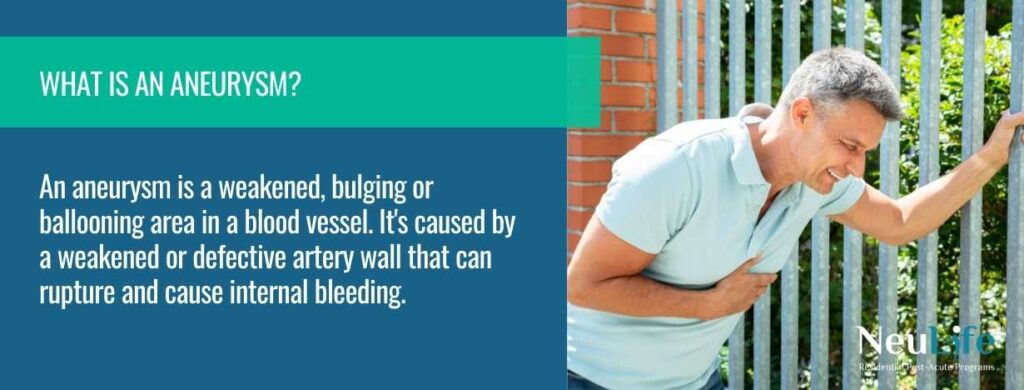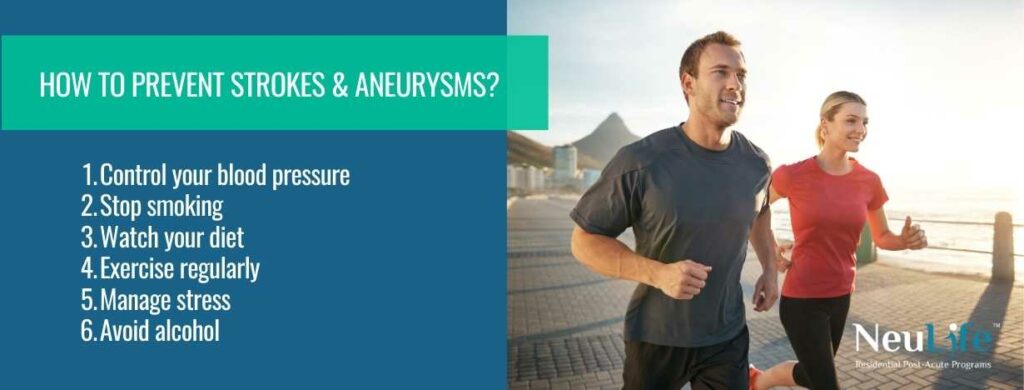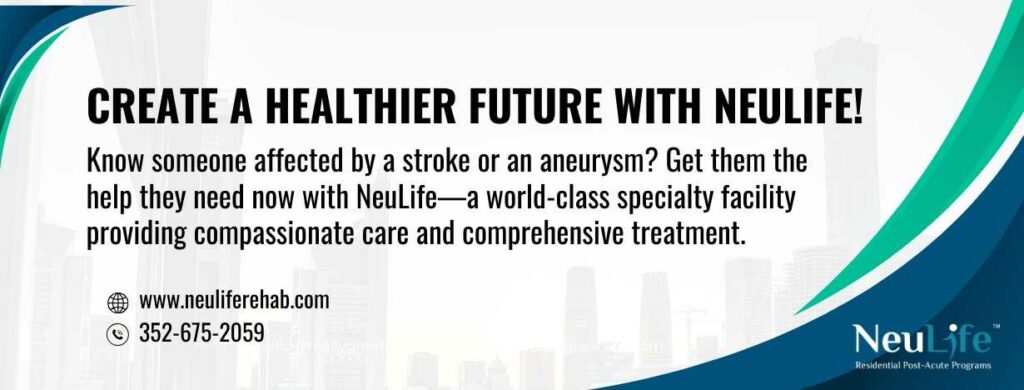The thought of experiencing a stroke or an aneurysm is frightening, and it’s something none of us want to endure. Annually, in the United States, over 795,000 people experience a stroke. Out of those cases, around 610,000 are initial strokes or strokes new to an individual. On the other hand, the mortality rate of ruptured aneurysms remains remarkably high.
But did you know that you can take steps to reduce the risk of stroke or aneurysm? In this blog post, we’ll explore the top tips for preventing stroke or aneurysm and provide you with actionable steps for protecting your health. With careful monitoring and some lifestyle changes, you can lower your chance of stroke or aneurysm and ensure you stay healthy and well. Read on to learn more!
Stroke and aneurysm are two terms used to describe medical conditions of the cardiovascular system. Though both of these conditions have similar symptoms, they are not the same and have different causes, treatments, and risks. Knowing how to spot the difference between them is essential to proper diagnosis and treatment.
Strokes occur when a blocked or ruptured blood vessel interrupts the flow of oxygen-rich blood to the brain. This lack of blood flow causes the death of vital cells in the affected area of the brain, leading to symptoms such as paralysis, difficulty speaking, numbness, and confusion. Treatments for stroke may involve the use of rehab therapy, clot busters, medications, and surgical intervention, such as a thrombectomy.
An aneurysm is an abnormal bulge or ballooning of an artery or blood vessel. This weakened area of the blood vessel sometimes ruptures and can lead to severe internal bleeding. Symptoms of an aneurysm may include chest pain, an irregular heartbeat, and a pulsing sensation in the abdomen. Depending on the size and location of the aneurysm, treatments may include endovascular repair, open surgical repair, or a combination of both.

A brain aneurysm is a bulge on a weakened blood vessel wall in the brain. While a brain aneurysm can be asymptomatic, meaning it has no signs or symptoms, it usually presents with different types of physical sensations.
The most common symptom of a brain aneurysm is a sudden, severe headache. The pain can be described as throbbing and sharp. It often starts in the back of the head and neck or in the front of the head. In some cases, the pain can move to the eyes or to either side of the head. Other symptoms associated with a brain aneurysm can include nausea, vomiting, and confusion.
People can also experience a sensation of red lines, flashes of light, or loss of consciousness when a brain aneurysm ruptures. A ruptured brain aneurysm can also lead to seizures and other neurological symptoms. It is important that people who experience these symptoms get medical attention to get an accurate diagnosis and treatment.
The primary cause of an aneurysm is an underlying weakness along the wall of a blood vessel, causing it to balloon out and become much larger than normal. Aneurysms can occur in both veins and arteries, but they are most commonly found in arteries. Aneurysms are most often the result of a combination of underlying conditions that cause vascular walls to be weaker than normal and prone to aneurysmal enlargement.
High blood pressure causes constriction of the blood vessels, leading to a weakening of the walls. This weakening can then lead to an aneurysm as the walls of the vessel become unable to withstand the pressure of the blood and the aneurysm grows larger.
Atherosclerosis, or the hardening of the arteries, is also a major risk factor for developing an aneurysm. As plaque builds up along the walls of the artery, the walls can become weakened to the point that an aneurysm can form. Plaque can narrow the artery further, causing an increase in pressure and exacerbating the growth of an aneurysm.
Inherited genetic conditions, such as Marfan syndrome, can also contribute to the development of an aneurysm. People with Marfan syndrome tend to have weakened connective tissue, which can make them more susceptible to vascular damage and aneurysm formation.
In addition to the conditions discussed above, some aneurysms can form without an underlying cause. The exact cause is unknown, but doctors believe that it may be related to aging and the normal deterioration of the walls of the arteries.
Stress can affect an individual’s physical health in many ways, and its impact on aneurysms is no exception. Stress is known to have a direct effect on blood vessel walls, leading to an increased risk of aneurysm formation. For example, high levels of stress can lead to increased heart rate and blood pressure, which in turn affect the blood vessel walls within the heart and brain.
The exact mechanism by which stress increases aneurysm risk is still being studied. However, it is known that stress can have other effects on blood vessels, such as reducing the elasticity of artery walls. This can make the vessel walls more vulnerable to rupturing, thus leading to aneurysm formation.
Other factors are also known to increase aneurysm risk, such as a family history or pre-existing health conditions. However, even if other risk factors are present, research suggests that reducing stress levels can still help reduce the risk of aneurysm formation.
While the exact mechanism by which stress causes aneurysms is still being studied, it is clear that reducing stress levels is a good idea for both physical and mental health. Additionally, it is important to be aware of the other risk factors for aneurysm formation and to seek medical attention if necessary.

Having a stroke or an aneurysm can be a frightening and life-altering experience, but there are steps you can take to reduce your risk of having a stroke or an aneurysm. Here are the best ways to prevent stroke or aneurysm and other lifestyle habits that can help reduce your risk.
Have you or a loved one been affected by stroke or other neurological conditions? At NeuLife, our specialists are experts at providing comprehensive neuro rehabilitation care to those affected by such ailments.
We also offer different programs and services, including:
Let us help you understand your condition and get on the path to recovery and a better quality of life – contact NeuLife today!

***
The material contained on this site is for informational purposes only and DOES NOT CONSTITUTE THE PROVIDING OF MEDICAL ADVICE, and is not intended to be a substitute for independent professional medical judgment, advice, diagnosis, or treatment. Always seek the advice of your physician or other qualified healthcare provider with any questions or concerns you may have regarding your health.

We know that choosing the next step in your recovery from a catastrophic illness or injury is complex. Together, we can help you take the next step.
Contact us with any questions today.